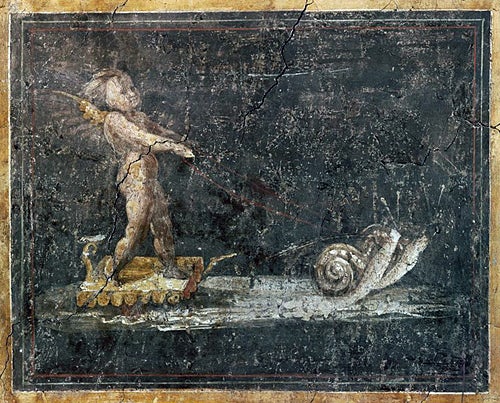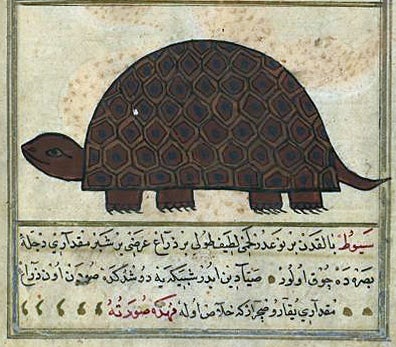The art of looking slowly

Workshop of Raphael, probably Giovanni da Udine, Cupid on a Wagon Drawn by Snails, 1516. Image and original data provided by SCALA, Florence/ART RESOURCE, N.Y. ; artres.com; scalarchives.com, (c) 2006, SCALA, Florence / ART RESOURCE, N.Y.
“I didn’t know how to look at art,” Phil Terry, founder and CEO of Collaborative Gain, confessed to ARTnews a few years ago. “Like most people, I would walk by quickly.” As the article points out, a study in Empirical Studies of the Arts estimates that museumgoers spend an average of just 17 seconds looking at an individual painting. But with Slow Art Day, Terry might just be changing those statistics.
It all started in 2008, when Terry decided to try an experiment at an exhibit at the Jewish Museum. Instead of rushing through the show glancing at everything, he looked at just a few works, slowly. He found that he loved it.
In the summer of 2009, Terry asked four people to join him in slowly looking at a small number of artworks at the Museum of Modern Art. The participants also loved it. Inspired, Terry organized a final test that fall, this time with groups led by volunteer hosts at 16 museums and galleries. Not surprisingly, the event was a resounding success, and Terry officially launched Slow Art Day as an annual event. The program continues to gain participants, with 86 museums and galleries around the world signed up already this year, with more on the way (260 participated last year).
The concept of Slow Art Day is simple: A volunteer host selects art at a gallery or museum, participants meet at the venue to examine several works for five to ten minutes each, and then discuss their impressions over lunch. The event is free; participants only pay their own museum admission fees.

Author: Zakariya ibn Muhammad Qazwini; Scribe: Muhammad ibn Muhammad Shakir Ruzmah-‘i Nathani, Illustration: A Turtle; Leaf from Turkish Version of the Wonders of Creation, 1121 AH/AD 1717. The Walters Art Museum
As Slow Art Day 2015 approaches, staff at Artstor will be helping to promote and support the event. We feel that Artstor’s Digital Library is relevant to helping people to engage with art. As Elizabeth Perkins points out in her essay Artstor: Making the Case for ‘Real’ Paintings in the Classroom, the Artstor Digital Library provides excellent support for the close observation of artworks in the museum. Perkins had her students carefully analyze close-ups of paintings in detail in Artstor one inch at a time, then visit the Metropolitan Museum of Art to see the same works in real life. She concludes, “Having seen a five-hundred-year-old fingerprint, my students could not wait to get out of my classroom and back to the museum, to the real things, and I could not have been happier about it.”
And that is how we at Artstor feel: We love museums and believe in engaging with objects first-hand. The next Slow Art Day is scheduled for April 11, 2015. To join, simply find a venue and sign up. If you don’t see one near you, volunteer to be a host yourself!